Hot Diet & Health Posts

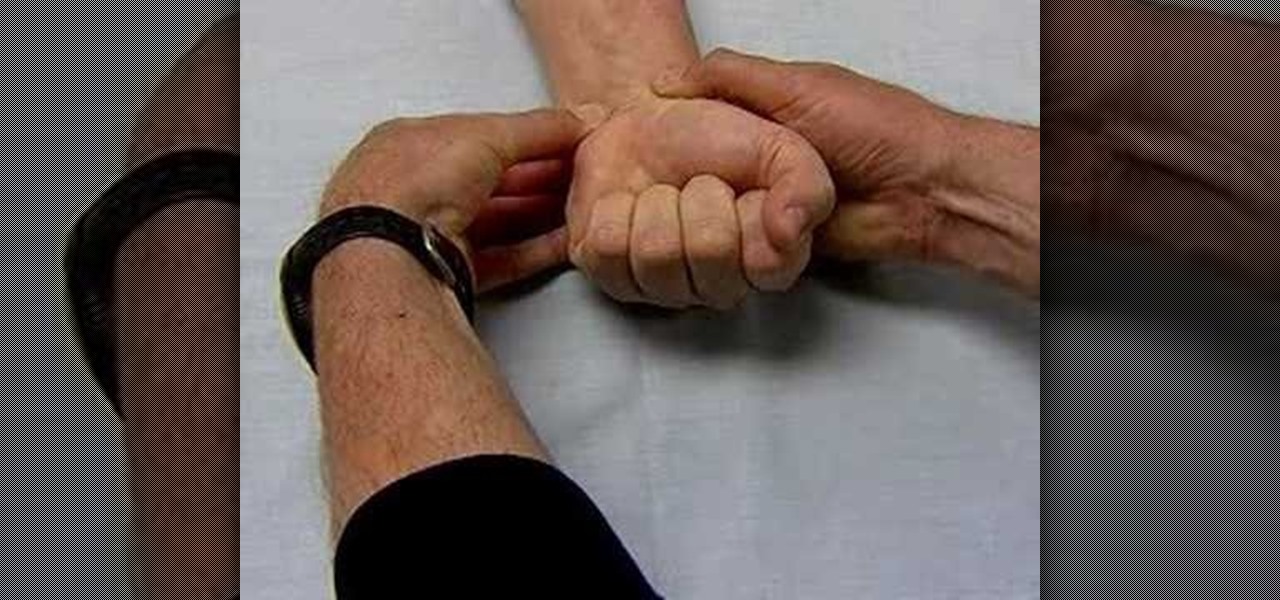
How To: Test radial and ulnar artery circulation on a patient
This how-to video demonstrates how to test radial and ulnar artery circulation. To begin have the patient clench the hand tightly. Upon release the blood should return quickly. If you push down on both arteries, specifically the radial side, the hand remains white after loosening the clenched hand. If you release the ulnar side you will notice that the hand returns to a normal pink color. Follow along and learn to test radial and ulnar artery circulation.
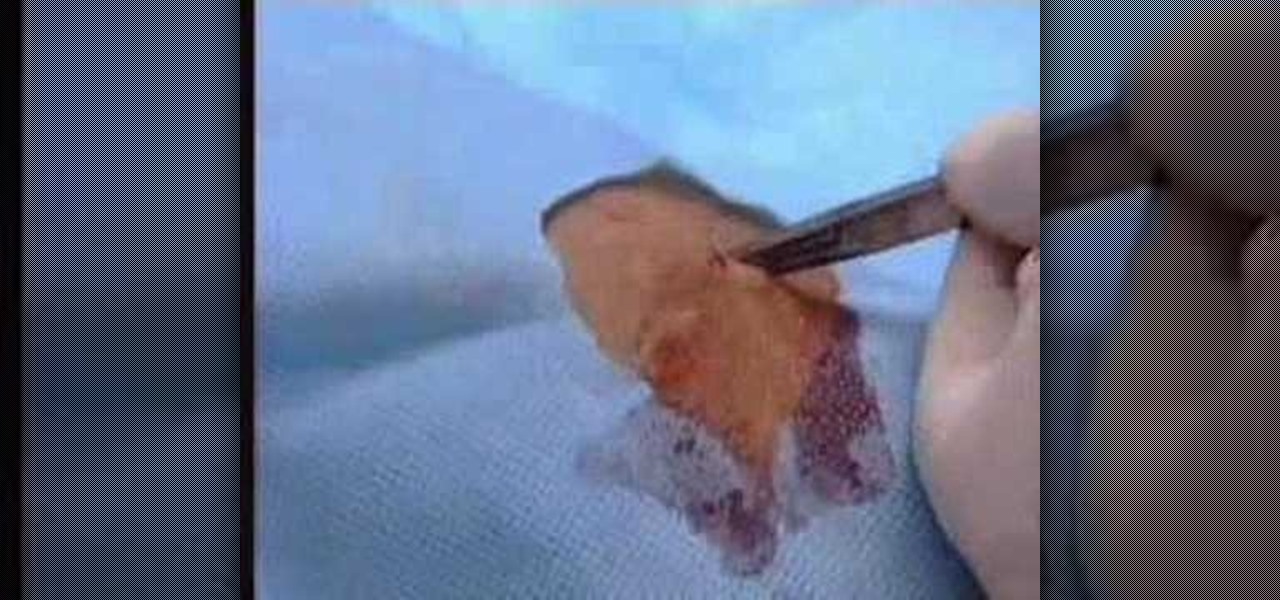
How To: Remove a mole using punch biopsy
This medical how-to video demonstrates how to perform two techniques for skin biopsies. Follow along and learn how to do both a punch biopsy and a shaving method to remove moles. This technique is used when a patient has an irregular shaped mole and has changed in appearance.
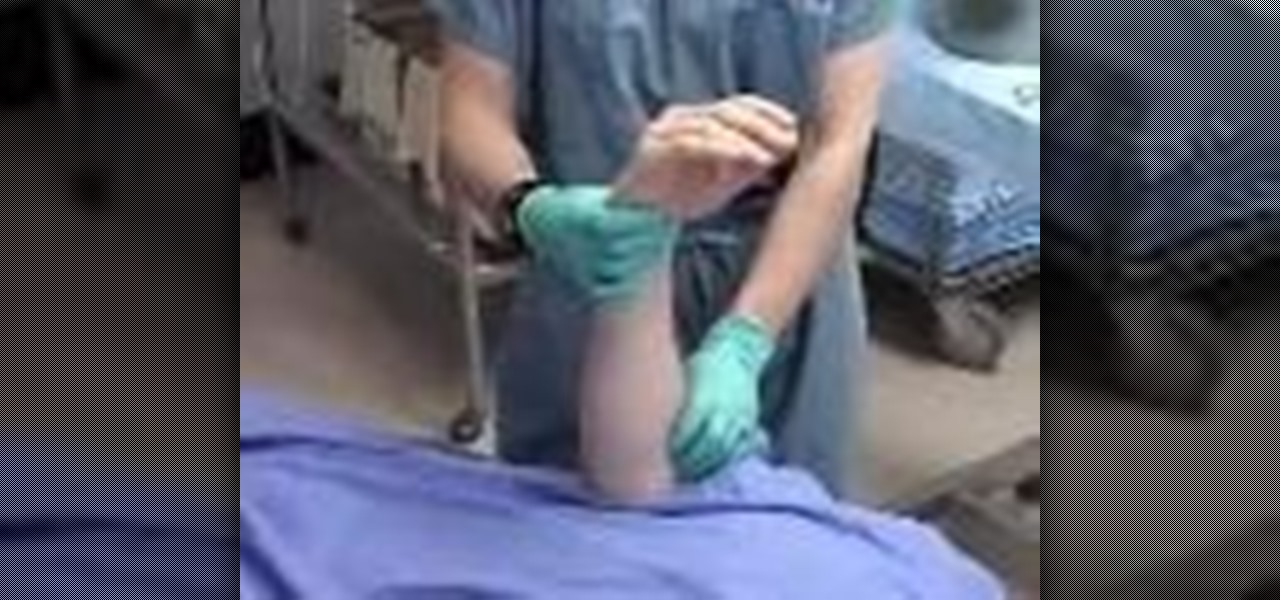
How To: Apply an ulnar gutter cast
This medical how-to video illustrates how to properly apply an ulnar gutter cast to a patient. To carry out this procedure you will need web roll, three inch plaster slabs, rolled gauze and a bucket of warm water. Follow along with this video and learn the proper technique for applying an ulnar gutter cast.
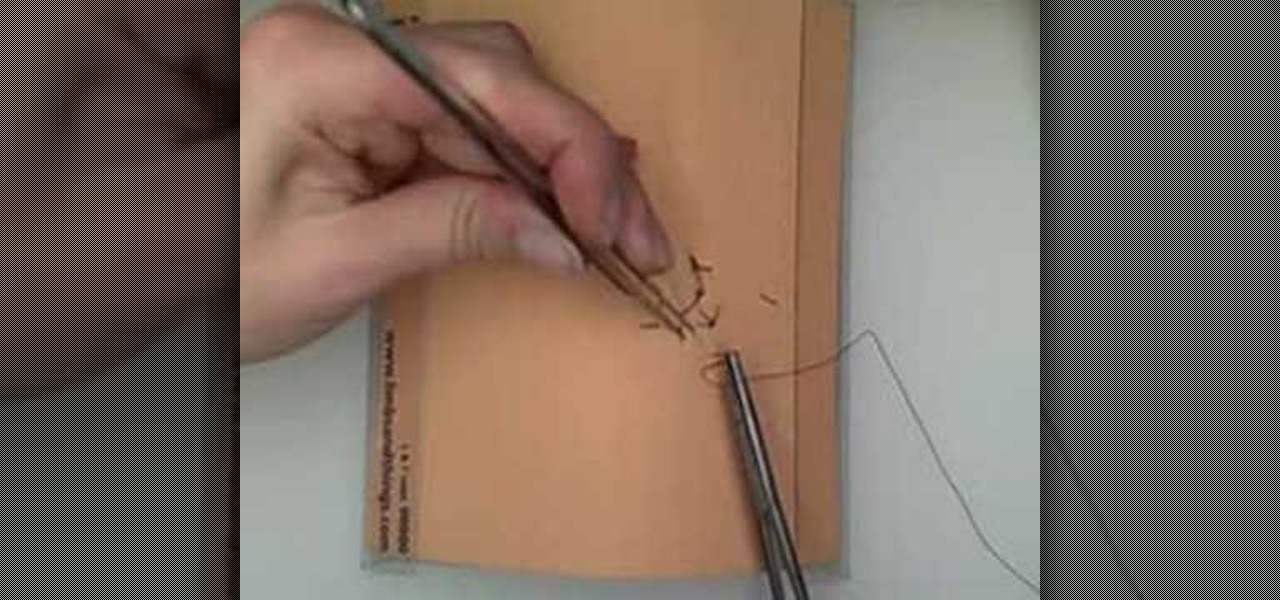
How To: Suture with the vertical mattress technique
An important part of surgery is knowing the various types of closures to perform. This medical how-to video demonstrates a vertical mattress suturing technique. The vertical mattress suturing technique is especially good for laceration repair or wound closure in the operating room when you want to ever the edges. It is an excellent technique for incorporating a large amount of tissue for greater tensile strength. Follow along and learn how it is done.
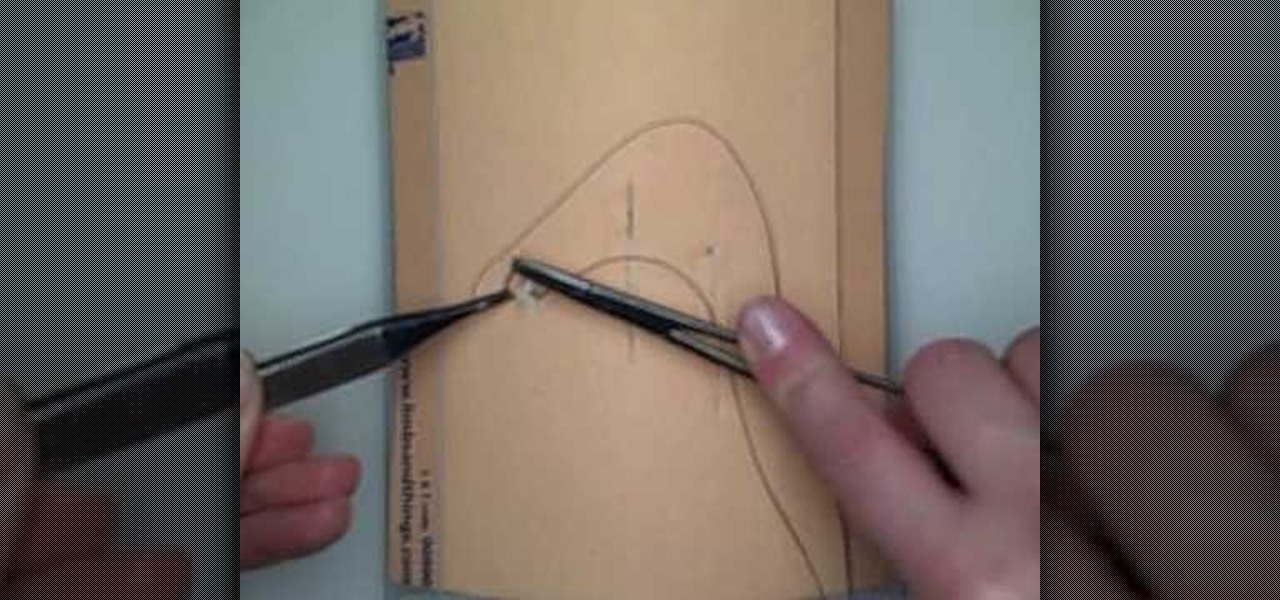
How To: Begin a subcuticular or intradermal suture
An important part of surgery is knowing the various types of closures to perform. This medical how-to video demonstrates how to do a subcuticular suturing technique. The subcuticular suture technique is also known as intradermal suturing. Follow along and learn how it is done. Subcuticular or intradermal suturing technique is great for wound closure in the operating room.
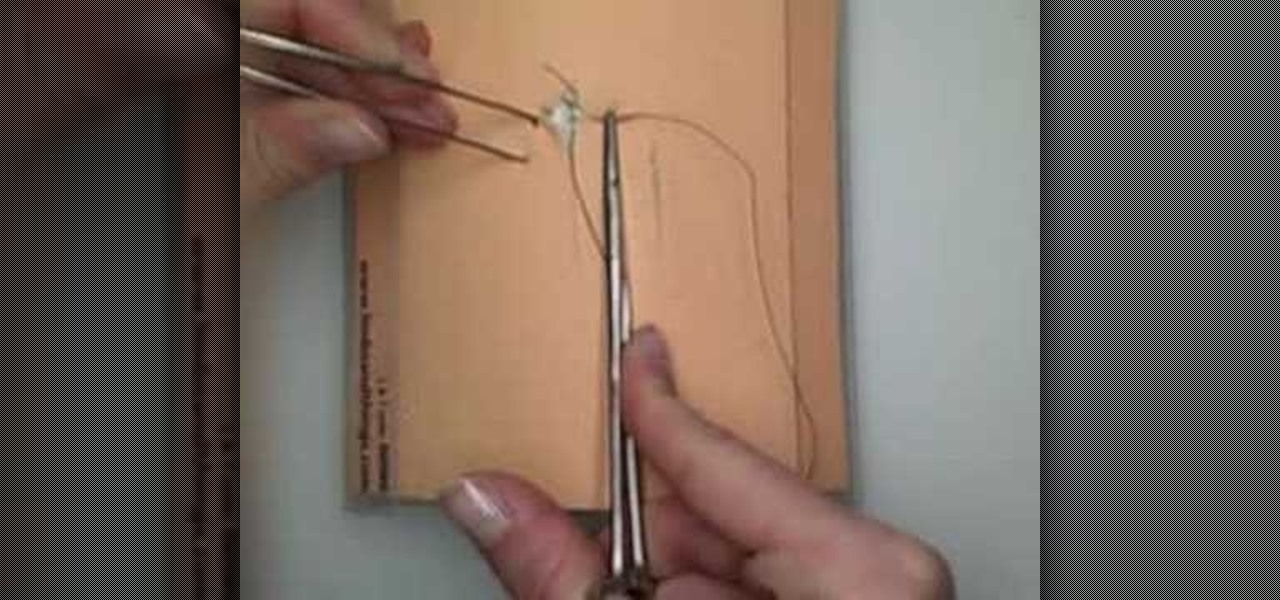
How To: Practice deep dermal suturing for surgery
An important part of surgery is knowing the various types of closures to perform. This medical how-to video demonstrates how to do a deep dermal suturing technique. The deep dermal technique is especially good for laceration repair or wound closure in the operating room. Follow along with the medical video to learn the deep dermal closure technique.

How To: Insert a drain with an air knot suture
An important part of surgery is knowing the various types of closures to perform. This medical how-to video demonstrates how to insert a drain using the air knot technique. Follow along and learn how it is done. Start with the drain for alignment, remove it and tie a one handed knot. Place the drain back and start the air knot sutures.
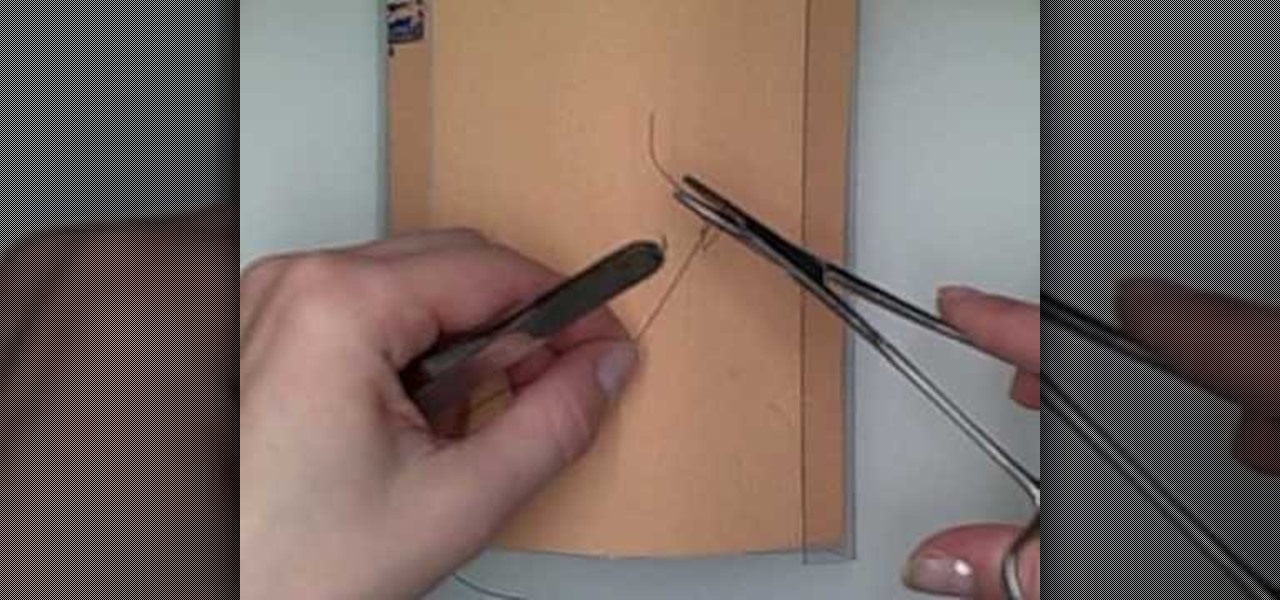
How To: Practice horizontal mattress suturing
An important part of surgery is knowing the various types of closures to perform. This medical how-to video demonstrates a horizontal suturing technique. The horizontal mattress suturing technique is especially good for laceration repair or wound closure in the operating room. Follow along and learn how it is done.
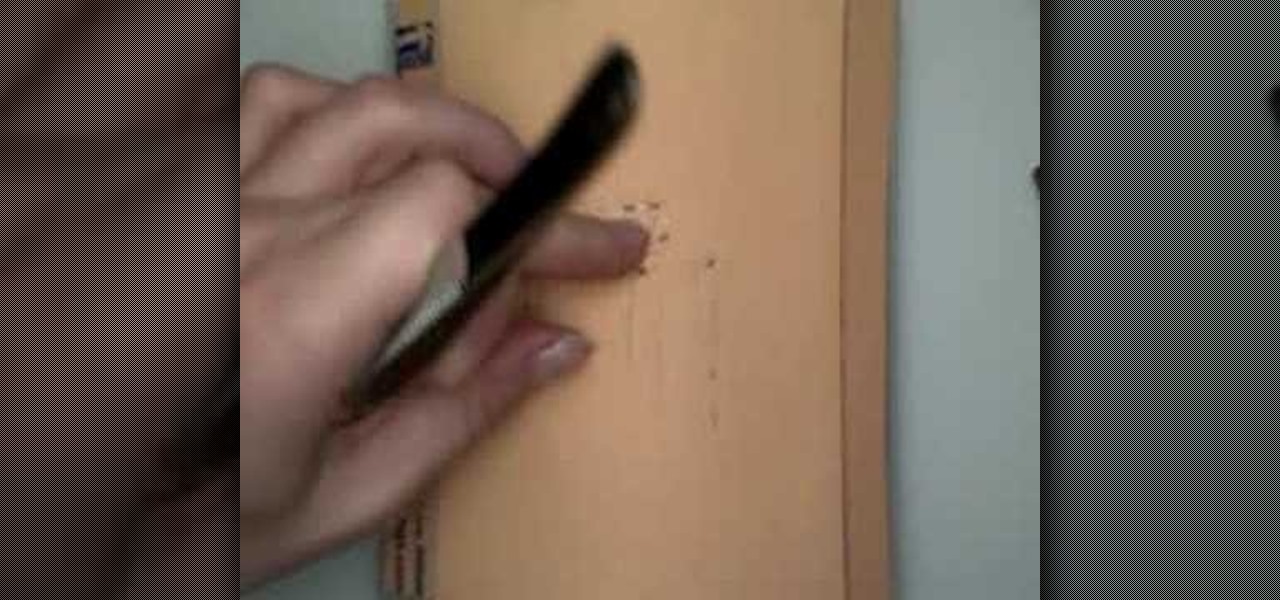
How To: Insert and remove staples
An important part of surgery is knowing the various types of closures to perform. This medical how-to video is a demonstration of a staple insertion and removal technique. The use of staples is used for laceration repair or wound closure in the operating room. Follow along and learn how to insert and remove stables. This is a two person procedure.
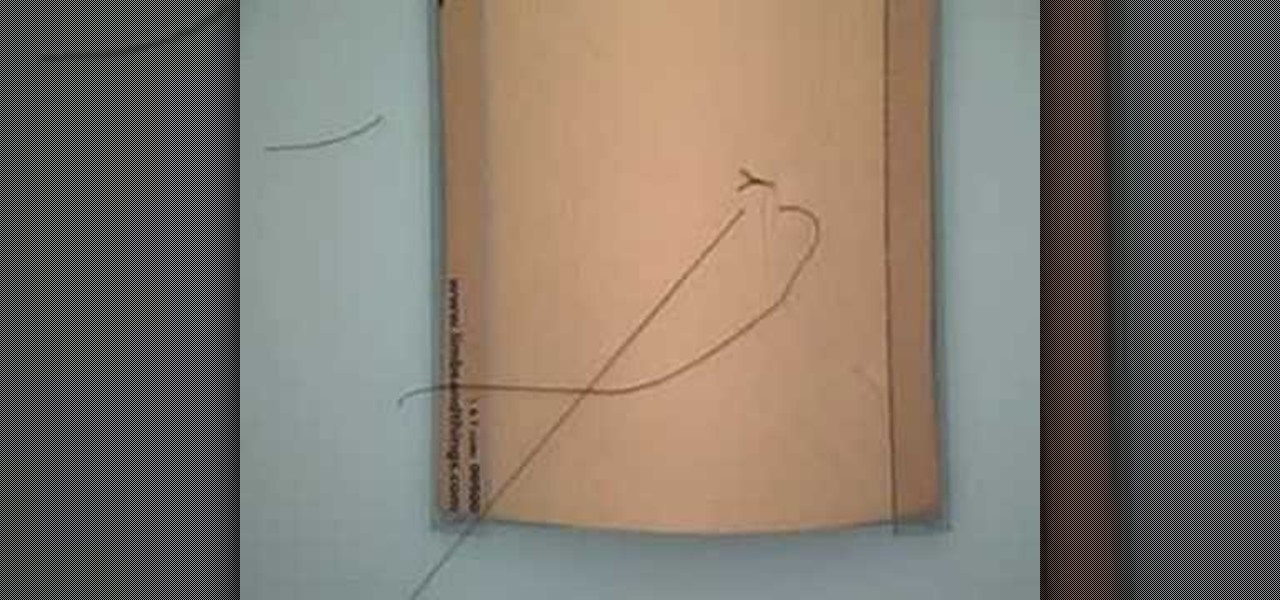
How To: Do simple interrupted suturing for simple lacerations
An important part of surgery is knowing the various types of closures to perform. This medical how-to video demonstrates how to do a simple interrupted suturing technique. The simple interrupted suturing technique is especially good for simple laceration repair. Follow along and learn how it is done.
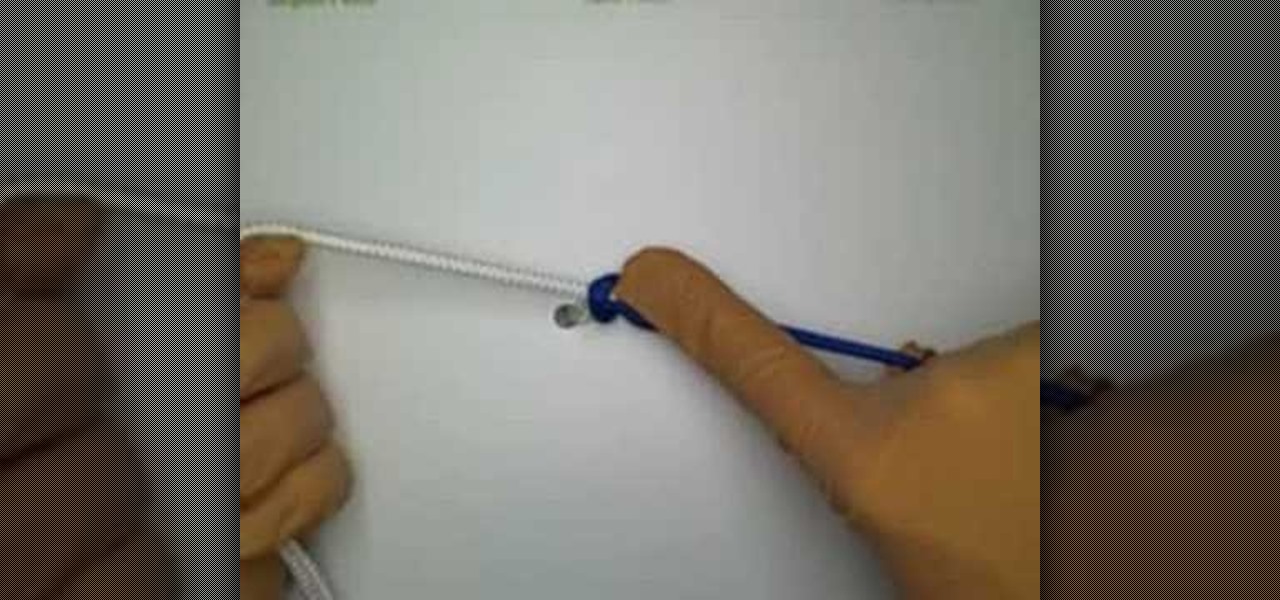
How To: Do a one-hand tie suturing for operating
An important part of surgery is knowing the various types of closures to perform. This medical how-to video demonstrates how to do a one-hand tie for suturing. Follow along and learn the special technique for doing the one-handed tie for suturing in the operating room.
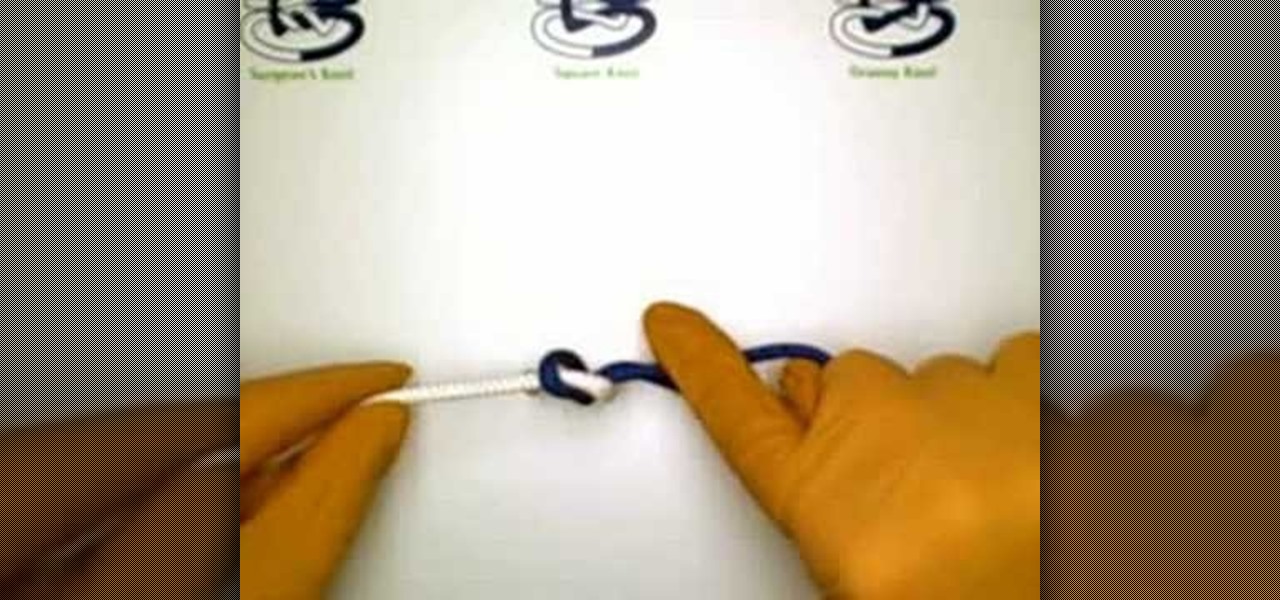
How To: Do a two-handed tie wound closure for surgery
An important part of surgery is knowing the various types of closures to perform. This medical how-to video demonstrates how to do a two-hand tie for wound closure. Follow along and learn the special technique for doing two-handed tie wound closures for surgery.

How To: Perform a Nesbitt Young bladder irrigation in nursing
Going to school to be a nurse? Then one of the many techniques you will learn is how to irrigate a bladder. In this nursing how-to video our host demonstrates how to do a Nesbitt Young irrigation. This type of bladder irrigation demonstration is not a CBI, continuous bladder irrigation, it is an intermittent irrigation. However it does use a continuous infusion of sterile solution into the bladder, most often, using a three-way irrigation closed system with a triple-lumen catheter. Infrequent...

How To: Place an abductor pillow on a THR patient in nursing
Going to school to become a nurse? Then one of the many things you will do as a nurse is trying to keep your patients comfortable while they are in the hospital. Follow along in this nursing how-to video and watch as the nurse places an abductor pillow under a total hip replacement patient. Sue, a physical therapist, shows you the correct protocol for administering abductor pillows.

How To: Review simple to advance airway management in nursing
Going to school to become a nurse? Then one of the things you are sure to learn includes proper airway management. Follow along in this nursing how-to video to review simple to advanced airway management. Watch, learn, and practice during nursing lab.
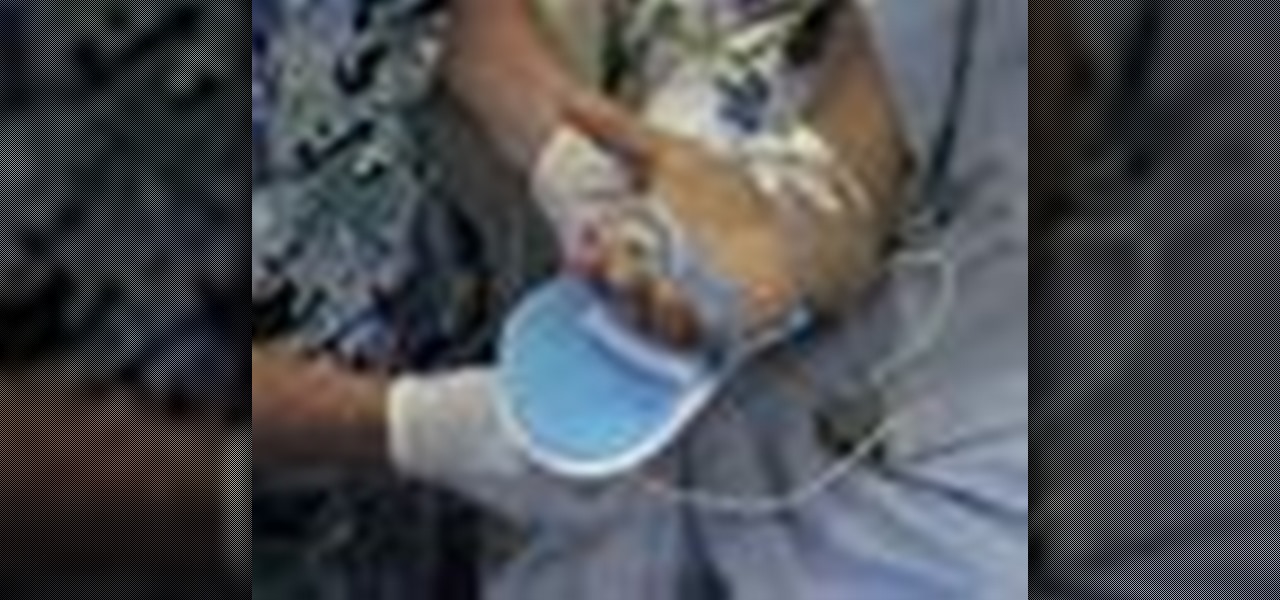
How To: Remove an Arterial Line in Nursing
Going to be a nurse? Then one of the procedures you are sure to encounter in the hospital is the removal of an arterial line. Follow along in this nursing how-to video to learn how to remove the arterial line from a patient. Remove of you a line is also known as discontinuing the line. In shorter terms many nurses also say DC the line. Follow along and learn the standard protocol for removing arterial lines.

How To: Fit a wound dressing for a Wound Vac in nursing
Studying to be a nurse? Then here is a nursing how-to video that teaches you the basic of operation of a Wound Vac machine and the proper technique for fitting a dressing on a wound. Every nurse should know the basics of this technique, follow along and see how easy it is to fit a wound with a dressing to use with the Wound Vac. These medical tips are sure to help you pass your nursing exam with flying colors.

How To: Assess and treat a venous wound with a nylon dressing
Studying to be a nurse? Then here is a nursing how-to video that teaches you how to assess and treat a venous wound with a nylon dressing. Every nurse should know the basics of this technique, follow along and see how easy it is to treat venous wounds with nylon dressings. It is important to monitor the progress of your patient's wound throughout their stay. These medical tips are sure to help you pass your nursing exam with flying colors.
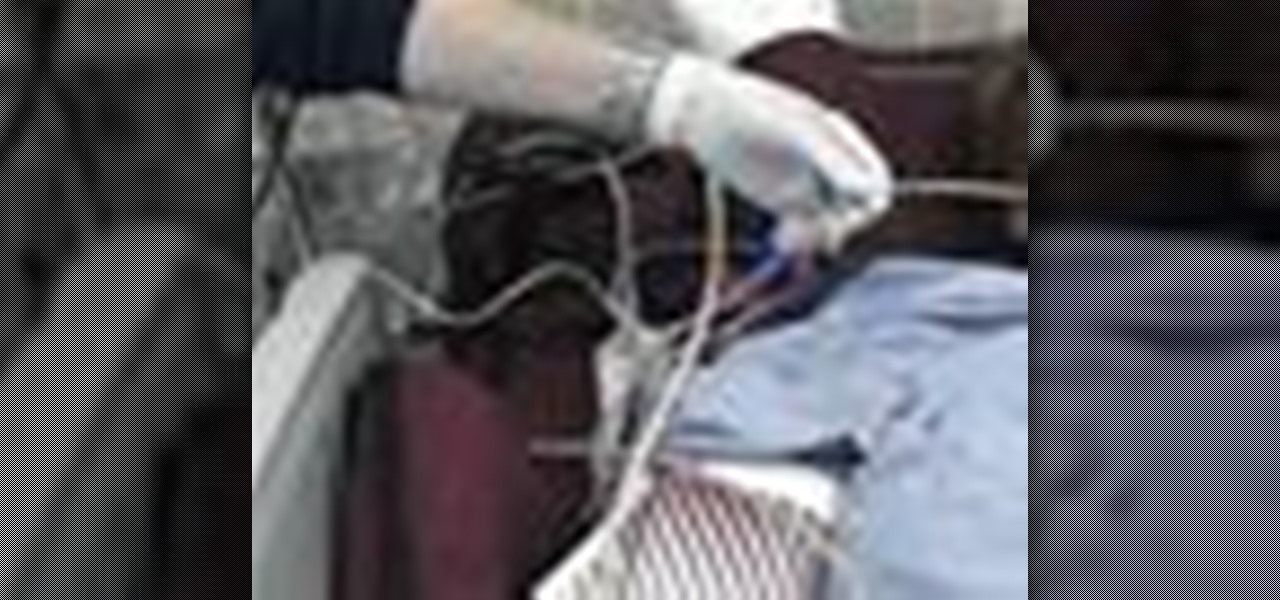
How To: Identify enternal feeding equipment in nursing
Studying to be a nurse? Then here is a nursing how-to video that teaches you how to properly identify enternal feeding equipment. Every nurse should know the basics of keeping their patient healthy, follow along and see how easy it is to identify enternal feeding tubes. These medical tips are sure to help you pass your nursing exam with flying colors.

How To: Treat an extremity trauma wound in nursing
Studying to be a nurse? Then here is a nursing how-to video that teaches you how to treat a trauma wound in the right lower extremity. Every nurse should know the basics of this technique, follow along and see how easy it is to use suction with a diverted tip to treat a wound that came as a result of a trauma. Our host recommends using a suction device plus Aqua Cell and lyofoam as part of the treatment. These medical tips are sure to help you pass your nursing exam with flying colors.

How To: Transfer a patient from a chair to a walker in nursing
Studying to be a nurse? Then here is a nursing how-to video that teaches you how to transfer patient with a total hip replacement out of a chair and into a walker. Every nurse should know the basics of this technique, follow along and see how easy it is to help a patient progress from sitting into a walker. These medical tips are sure to help you pass your nursing exam with flying colors. Hear them discusses three major hip precautions, correct walker position, use of safety belts and discuss...

How To: Transfer a THR patient from bed to a walker in nursing
Studying to be a nurse? Then here is a nursing how-to video that teaches you how to transfer a total hip replacement patient from the bed to a walker. Every nurse should know the basics of this technique, follow along and see how easy it is to transfer THR patients to a walker from the bed with a trapeze device. These medical tips are sure to help you pass your nursing exam with flying colors.

How To: Transfer patients into beds using a trapeze in nursing
Studying to be a nurse? Then here is a nursing how-to video that teaches you how to transfer a THR patient into a bed using a trapeze and an abduction pillow for support. Every nurse should know the basics of this technique, follow along and see how easy it is to move total hip replacement patients into the bed using only a pillow and a trapeze. These medical tips are sure to help you pass your nursing exam with flying colors.

How To: Complete a bedside assessment in nursing
Going to be a nurse? Then one very important part of your daily routine will involve doing bedside clinical assessments. This how-to video shows you the the technique for completing a bedside assessment. Follow along as Loretta Thrape, NP,MSN, BSN, shows you the proper guidelines for doing this bedside assessment of your patients.

How To: Do a daily check of the code blue cart in nursing
Going to be a nurse? Then one important part of your nursing responsibilities involves doing a daily check of the code blue cart or crash cart. The crash cart is checked every shift for emergency items and function. In this how-to video we review the nurse’s responsibility to test the defibrillator oxygen tank, most hospitals change tanks at 500 or 1000 psi. Follow along an see how simple it is to do a daily check of the code blue cart.

How To: Assess a diabetic foot with ulcers in nursing
Going to be a nurse? Then one of the many things your will see through the hospital doors are diabetic patients. This nursing how-to video shows you how to assess a diabetic foot with ulcers. Diabetics suffer from poor circulation and as a result are vulnerable to foot wounds. Follow along as this therapist assess the condition of a foot ulcer on a live patient.

How To: Insert a Foley catheter in nursing
Going to be a nurse? Then one very common procedure done by a nurse involves inserting a Foley catheter into a patient. Follow along in this nursing how-to video to learn how to insert a Foley catheter. Before starting always make sure to double check the doctor's orders and have all your materials ready.
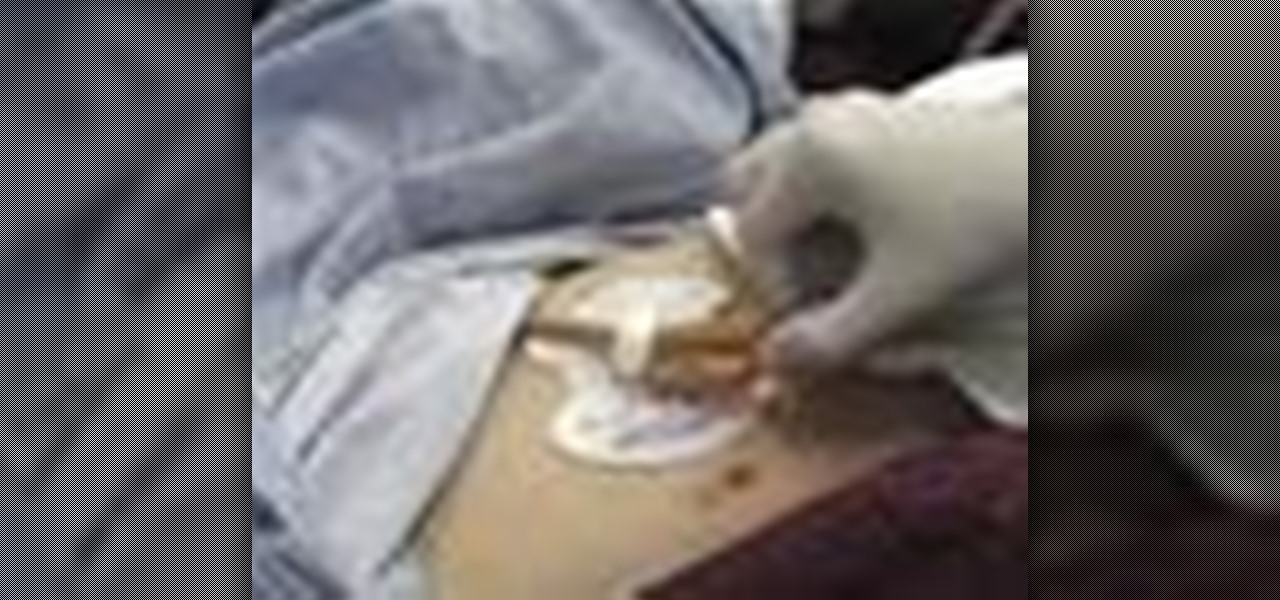
How To: Attach catheter tubing to the leg to avoid pulling
Studying to be a nurse? Then one important part of nursing involves making your patient comfortable. This nursing how-to video demonstrates how to attach Foley catheter tubing to the leg to avoid pulling. Our nurse uses a catheter securement device to secure the catheter in place. Follow along and learn how easy it is to use this device to secure the Foley catheter to avoid pulling.

How To: Gown for an isolation room in nursing
Studying to be a nurse? Then follow along with this nursing how-to video to learn how to gown for isolation. Watch as our RN shows you the proper technique for gowning, gloving and how to put on a face mask. When leaving the isolation room you will remove the gown and gloves in the isolation room. Practice this technique during nursing lab.

How To: Perform a hemodynamic profile in nursing
Studying to be a nurse? Then one important part of nursing involves knowing how to perform a hemodynamic monitoring. Follow along in this nursing how-to video to learn how to do a hemodynamic profile. It is a short review of PA/wedge and cardiac output procedure. Always make sure the transducers are level and zeroed before starting.
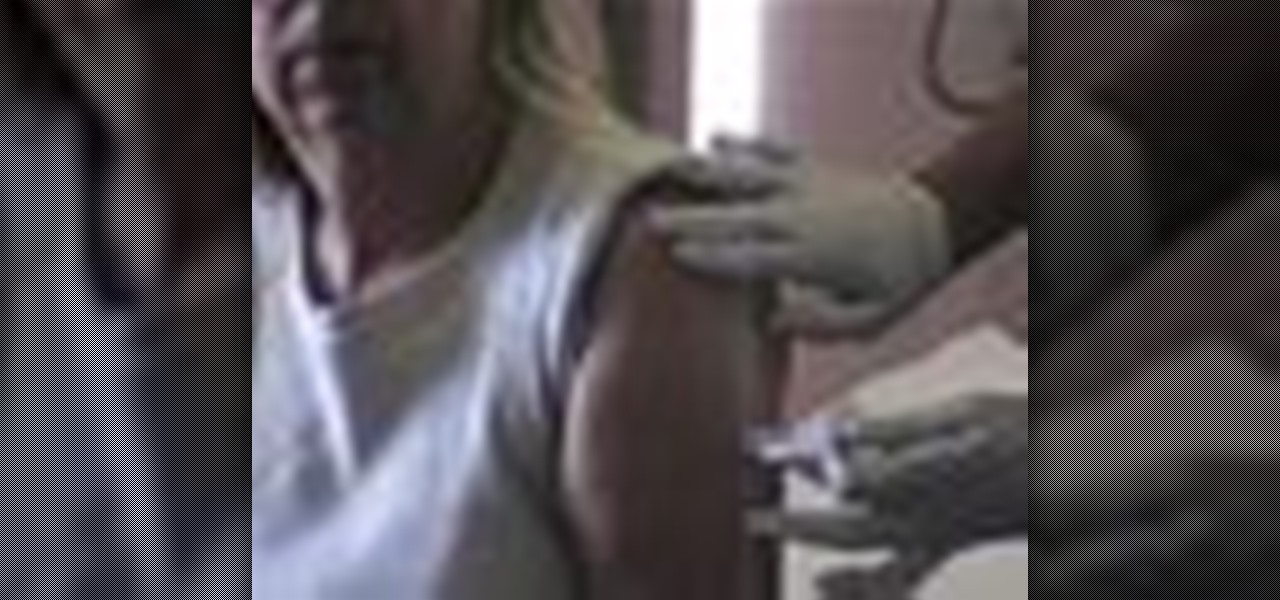
How To: Administer an intramuscular deltoid injection
Studying to be a nurse? Then one thing you must know how to do is administer an intramuscular injection. Follow along in this nursing how-to video to learn the proper procedure for giving patients an IM injection in the deltoid muscle. Before starting always make sure you have all your materials handy and double check the doctor's order.

How To: Administer heparin to a patient in nursing
Studying to be a nurse? Then follow along with this nursing how-to video to learn how to administer hepranin to a patient. This technique is very common in nursing. Watch and observe the proper method identifying, measuring, and administering heparin dosages. Before starting always make sure to check the doctor's orders and have all your equipment ready.

How To: Administer an insulin injection in nursing
Studying to be a nurse? Then follow along with this nursing how-to video to learn how to administer insulin injections. This technique is very common in nursing. Watch and observe the proper method for setting up and administering regular and NPH insulin injections. Before starting always make sure to check the doctor's orders and have all your materials handy.

How To: Administer an intramuscular ventrogluteal injection
Studying to be a nurse? Then follow along in this nursing how to video to learn how to administer an intramuscular injection in the ventrogluteal region. The ventrogluteal region simply means near or on the hip. Watch this IM ventrogluteal injection demonstration by a second year nursing student.

How To: Give an intradermal injection in nursing
Studying to be a nurse? Then follow along with this nursing how-to video to learn how to administer an intradermal injection. This injection technique is very common in nursing. Watch and observe the nursing student as she shows you the proper protocol for an intradermal injection. Before starting always make sure to check the doctor's orders and have all your equipment handy.
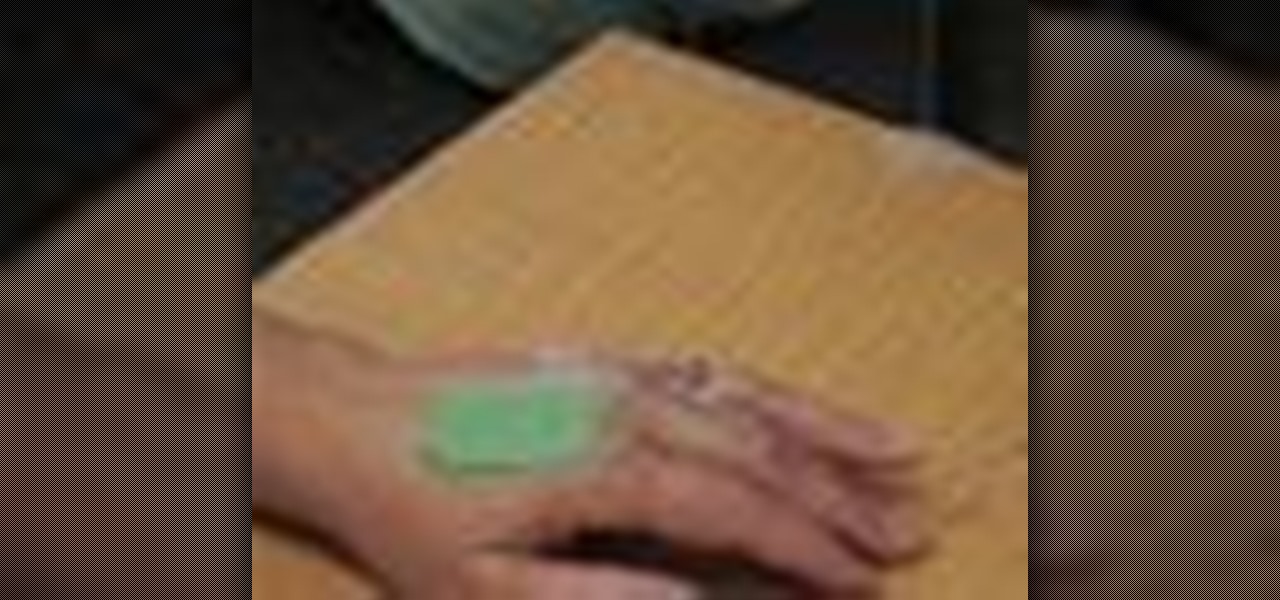
How To: Discontinue an IV line in nursing
Studying to be a nurse? Then a very common procedure in nursing involves removing a saline lock or an IV line. This procedure is also called DC IV, or discontinue an IV. Follow along in this nursing how-to video to learn the proper protocol for discontinuing an IV line. Before DCing the IV always double check the doctor's orders and have your materials handy.

How To: Discontinue a saline lock in nursing
Studying to be a nurse? Then a very common procedure in nursing involves removing a saline lock or an IV line. This procedure is also called DC IV, or discontinue an IV. Follow along in this nursing how-to video to learn the proper protocol for discontinuing a saline lock. Before DCing the IV always double check the doctor's orders.

How To: Set Up an Alaris Infusion Pump in Nursing
One important part of nursing is knowing how to set up an IV infusion pump. Follow along with this Alaris setup demonstration to learn how to carry out this procedure with a real patient. Keep watching and learn how to do a piggyback IV set up also. Watch, learn and practice setting up Alaris IV infusion pumps during nursing lab.

How To: Convert a running IV into a saline line in nursing
Studying to be a nurse? Then follow along with this nursing how-to video to learn how to convert a running IV into a saline line. This technique is very common in nursing. Watch and observe the proper method for change a running IV into a saline line. Doing so will help your patient walk around more easily. Before starting always make sure to check the doctor's orders.

How To: Insert an IV needle in a live person for nursing
Studying to be a nurse? Then follow along with this how-to video to learn how to start an IV on a live person. IVs are an important part of a nurse's everyday routine. When inserting an IV needle, be sure to enter at a 30 degree angle. The nursing students in this video, Moe and Drew, insert the needle at 10 to 20 degrees.






